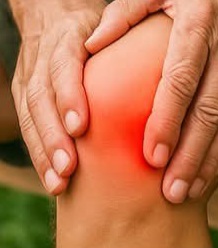f you’re over 60 and noticing that your legs feel heavier, weaker, or more unsteady than they used to, you’re not alone. Many older adults experience gradual leg weakness—but what’s surprising is how often the root causes are overlooked. It’s not always just aging. Sometimes, it’s hidden factors in your diet, daily habits, or even the way you sit. The good news? Once you understand what’s really going on, you can take simple, effective steps to build strength and regain confidence in your legs.
Here are six sneaky reasons your legs may be getting weaker—and what you can do to turn things around.1. Sedentary Living Shrinks Muscle MassAs we age, we naturally lose muscle mass—a condition known as sarcopenia. But inactivity speeds up the process. Sitting for hours a day weakens leg muscles, reduces blood flow, and shortens tendons.Common signs:Trouble getting up from a chairLegs feel heavy when walkingDifficulty climbing stairsWhat you can do:Stand up and stretch every 30–60 minutesTake short walks throughout the dayAdd light bodyweight exercises like squats or heel raisesEven 10 minutes of movement a few times a day can make a big difference. Start small, and build momentum over time.2. Blood Flow Problems Are Stealing Your EnergyPoor circulation, often caused by conditions like high blood pressure or high cholesterol, can make your legs feel tired, cold, or tingly. This is especially common in older adults with a history of heart issues.Look out for:Cold feet even in warm weatherNumbness or tingling in calves or feetLegs that ache more after standingHelpful tips:Elevate your legs for 10–15 minutes dailyWear compression socks if recommended by your doctorEat circulation-boosting foods like beets, garlic, and berriesImproved blood flow can bring oxygen and nutrients back to your leg muscles, helping them feel stronger and more awake.3. Lack of Protein Weakens Your Muscle RepairMany seniors don’t get enough protein, especially if they’ve cut back on meat or eat smaller meals. But protein is essential for building and repairing muscle tissue—especially in the legs.Warning signs:Muscle loss despite staying activeSlower recovery after physical effortIncreased fatigueBoost your intake with:Eggs, Greek yogurt, or cottage cheese for breakfastLentils, tofu, or tempeh for lunchFish, chicken, or beans for dinnerAim for 20–30 grams of protein per meal, and spread it evenly throughout the day to support muscle maintenance.4. Joint Stiffness Is Limiting Your Range of MotionStiff knees, hips, or ankles can silently reduce how much you move your legs, even if you’re not in pain. Less movement leads to less strength—and the cycle continues.How to spot it:You shuffle your feet instead of lifting themBending down feels harder than beforeYou avoid walks because you feel “tight”What helps:Gentle stretching in the morning and eveningLow-impact movement like swimming or tai chiWarm compresses to loosen stiff areasKeeping joints mobile is key to helping your legs stay strong and functional.5. Vitamin Deficiencies May Be Draining Your StrengthCertain vitamins—like B12, D, and magnesium—are vital for muscle function and nerve health. As we age, absorption decreases, making deficiencies more likely.Watch for these red flags:Leg cramps, especially at nightTingling or burning sensationsUnexplained weaknessConsider these food sources:B12: eggs, dairy, fortified cerealsVitamin D: sunlight, salmon, fortified plant milksMagnesium: pumpkin seeds, leafy greens, bananasTalk to your healthcare provider before taking any supplements, and ask for a blood test to check your levels.6. Poor Footwear and Balance Can Accelerate DeclineShoes that are too worn, too soft, or not supportive can throw off your balance and strain leg muscles. And when balance is off, we often move less—leading to further weakness.Symptoms to note:Uneven wear on shoe solesFeeling unstable on flat surfacesFear of falling or trippingSimple fixes:Get your feet measured annuallyChoose shoes with arch support and a firm soleDo balance-building exercises like standing on one foot or walking heel-to-toeBetter footwear and improved balance reduce your fall risk while keeping your legs working as they should.Daily Habits to Rebuild Leg Strength After 60Once you’ve identified the hidden causes, take these simple steps each day to regain strength:Stretch each morning to wake up your legsWalk for 10–20 minutes after lunch or dinnerAdd strength moves like wall sits or leg lifts 2–3 times a weekEat a protein-rich breakfast to fuel your musclesStay hydrated—even mild dehydration can sap energyCheck your medications with a doctor if weakness started recentlySmall, steady actions can lead to noticeable results over time.Final ThoughtsLeg weakness after 60 is not just “getting old”—it’s often the result of habits, nutrition gaps, or circulation issues that can be addressed. The earlier you notice and act, the better your chances of staying mobile, independent, and strong.Start today by focusing on just one of these hidden reasons. Maybe it’s swapping soft shoes for better ones. Maybe it’s adding a protein snack or stretching after breakfast. One change at a time is all it takes.If this helped you understand your body better, share it with a friend or family member. We all deserve stronger legs and more confident steps.Have a tip that worked for you? Leave it in the comments—your story might inspire someone else!*Disclaimer: This article is for informational purposes only and does not substitute professional medical advice. Consult your doctor before making health changes or beginning any new exercise or nutrition routineYour Legs Are Getting Weaker After 60—Here’s What No One Tells You
